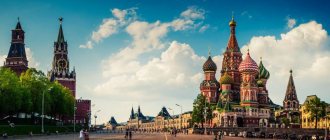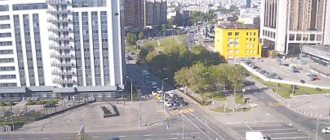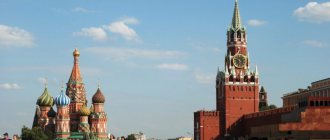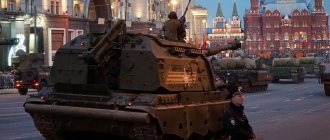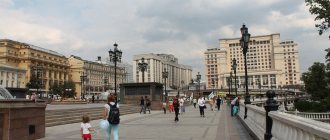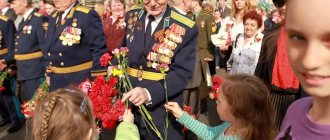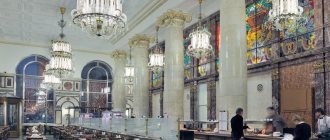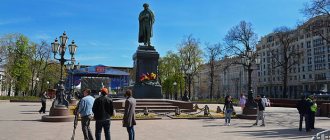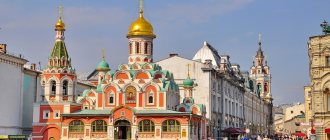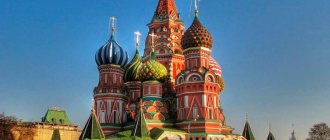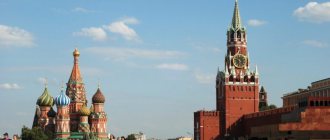Red Square is one of Russia's greatest landmarks. She is known to millions of people both in the country and abroad. After all, this is not just a square, but a real museum, on the territory of which dozens of historical monuments are collected.
Every Muscovite thinks that he knows everything about Red Square. But is it? We invite you to plunge into history and expand your existing knowledge. All the most interesting things about this phenomenal place are here!
We present to your attention 10 interesting facts about the most important square in Russia.
Why is Red Square called red?
It would seem that the answer to the question “why is Red Square called red?” suggests itself. The perimeter of the square is bordered by the red walls of the Moscow Kremlin and the red Historical Museum, here is your answer. However, the history of Red Square says that this is not at all the case. For a long time, the walls of the Kremlin in Moscow remained white. Even after the walls were made of red brick, the walls were often whitewashed according to the fashion of the time, and the museum was built even later, demolishing the pharmacy building. Since its formation, Red Square has changed several names. It is not known for certain when Red Square was built. The first chronicle mention of it dates back to the 15th century. Back then Red Square was called Torg. There was also the name “Fire” meaning “an empty, hollow place associated with trade.” Only from the second half of the 17th century the name “Red” was assigned to the square.
The most common version is that, by analogy with the red maiden, the name “Red” comes from the word “Beautiful”. It is believed that after the addition of the Spasskaya Tower in 1625, a small section of the square between the tower, St. Basil's Cathedral and Lobnoye Mesto began to be called Red Square. Later this name spread to the entire site. In general, why Red Square was called red, history is silent, leaving only guesses.
Execution place
The platform, which today is known as Lobnoye Mesto, was built in the 30s of the 16th century. It was an improvised platform from which the most important decrees of the rulers were announced to the people. Ceremonial events were also held at the same place.
Some believe that the Execution Place also served as a scaffold on which convicted criminals were executed. But it is not so. Executions were carried out nearby, on log platforms erected specifically for this purpose. In 1786, Lobnoye Mesto received the appearance that has survived to this day. It is made in the form of a round elevation surrounded by a parapet. There is also a stone staircase that allows you to ascend to the podium.
Manezhnaya Square
In most cases, to get to Red Square and see its sights, you will first need to pass another square - Manezhnaya Square. Here is a shopping center and one of the most expensive hotels - the Four Seasons Hotel on Red Square in Moscow. This is the former Moscow Hotel. Most of us can only dream of staying there for at least a day, but it is certainly worth it.
There is also something to see on Manezhnaya Square. Moreover, it so happens that some of the attractions here are part of the architectural and historical ensemble of Red Square. Next we will try to tell you in order about all the main attractions of Red Square. Next to the hotel building there is a branch of the Great Historical Museum - the Museum of the War of 1812. During Soviet times, this building was better known as the Lenin Museum in Moscow on Red Square.
State Historical Museum
Thus, the State Historical Museum on Red Square in Moscow is located at the very beginning of the square. More precisely, it is located between Red Square and Manezhnaya.
This is the largest national historical museum in Russia. The museum on Moscow's Red Square was founded in 1872. Construction of the building, designed by architect Sherwood and engineer Semenov, was completed in 1883.
As for me, the building of the historical museum is one of the main decorations of Red Square.
The collection of the Historical Museum in Moscow includes more than 5 million exhibits, not counting historical documents. The permanent exhibition in the building at 1 Red Square contains only 0.5% of the entire collection.
View of the State Historical Museum in Moscow from Red Square.
Monument to Zhukov on Red Square in Moscow
Separately, I would like to note the monument to Zhukov standing in front of the historical museum on Red Square in Moscow.
The monument to Marshal Zhukov near the building of the Historical Museum was erected only in 1995. The equestrian statue is made in the style of socialist realism.
The four-meter sculpture is made of bronze. The weight of the composition together with the granite pedestal is 100 tons. Marshal Zhukov is depicted riding his stallion Idol, trampling the standards of Nazi Germany with his hooves. The sculptor presented the marshal standing in his stirrups, receiving the Victory Parade on Red Square on June 24, 1945. At the same time, from the photo, you can see that the horse is not standing, but is in motion.
Resurrection Gate and Iverskaya Chapel on Red Square
Red Square itself is located directly behind the Historical Museum, which can be walked around on both sides. If you go to the left, you will see the Resurrection Gate, which separates Red Square from Manezhnaya.
Between the two aisles is the Iveron Chapel.
The Resurrection Gate and the Iverskaya Chapel on Red Square have a centuries-old history. The gate was originally erected in 1538. They were called Neglinnye. They were part of the fortress wall of Kitay-Gorod. Only 130 years later, in 1669, at the place where Tsar Alexei Mikhailovich met the Iveron Icon of the Mother of God who had arrived from Athos, the first wooden chapel was built. After this, the gates began to be called Iversky.
During Soviet rule, first the chapel and then the gates were completely demolished, as they interfered with parades. The gates were rebuilt only in 1995. Now the walls of the gate are decorated with images of icons.
Icon of the Resurrection of Christ. Moscow. Red Square
Kazan Cathedral on Red Square in Moscow
The Kazan Cathedral on Red Square in Moscow is also known as the Cathedral of the Kazan Icon of the Mother of God. This Orthodox church on Red Square appeared in 1625. In 1936, three centuries later, it suffered the fate of the Resurrection Gate behind which it is located.
In 1993, the Cathedral was rebuilt in a form close to the original, although before its destruction it looked more like an ordinary church, only on Red Square.
Collision of two times
Red Square is one of the few places in Russia where old and new architectural structures peacefully coexist. Both categories complement each other quite harmoniously. Buildings built in the Middle Ages are historically valuable. They are restored with full preservation of their original appearance.
Young buildings are located on the same territory, and their appearance does not cause a sharp contrast. The design is designed in such a way that the new buildings do not interrupt the old ones with architectural features and colors. Some structures were erected just a few years ago. Like, for example, the Kazan Cathedral, which was blown up in 1936 on the orders of Stalin. Or the Resurrection Gate, dismantled in 1931 for easy tank passage. They were rebuilt only in 1994.
Moscow. Red Square
Then Red Square itself begins.
The skating rink on Red Square is the main skating rink in the country. It is installed in front of GUM for three winter months, December, January and February. In addition, during the winter months, a fair on Red Square takes place near GUM.
Moscow Kremlin and Red Square
If you go around the Big Historical Museum on the right side, you can get to Red Square by walking along the walls of the Moscow Kremlin.
The entrance to the square is located between the museum and the Corner Arsenal Tower.
Next comes the Nikolskaya Tower on Red Square.
Senate Tower and Senate Palace of the Moscow Kremlin.
The Spasskaya Tower on Red Square is perhaps the most famous tower of the Kremlin. It was built at the end of the 15th century.
Tsar's Tower. This is the youngest tower of the Moscow Kremlin. It appeared only in 1680.
Alarm Tower.
Konstantino-Eleninskaya tower of the Kremlin.
Beklemishevskaya Tower on Vasilievsky Spusk is the outermost tower of the eastern wall of the Moscow Kremlin.
Authorship of the project
The first wooden Moscow Kremlin was built at the insistence of Yuri Dolgoruky. The fence of stakes was designed to protect city residents from enemy attacks. The wooden walls of the Kremlin often burned. For this reason, in the 14th century, Dmitry Donskoy decided to rebuild the walls from stone. The white stone was not intended for long-term service, so the Kremlin wall was rebuilt several times. During all the reconstructions, the triangular shape of the wall remained unchanged. In ancient times, the triangle was considered a sacred symbol of protection.
Lenin Mausoleum on Red Square
Lenin's Mausoleum on Red Square is located next to the wall of the Moscow Kremlin in front of the Senate Tower.
Behind the mausoleum building near the Kremlin wall between the Nikolskaya and Spasskaya towers there is a necropolis. Revolutionaries and prominent figures of the Soviet government are buried here. Among others, here are the graves of Stalin, Brezhnev, Budyonny, Kirov, Kuibyshev, Frunze, Sverdlov, Krupskaya, Marshal Zhukov and Clara Zetkin. In total, there are 115 urns and several mass graves, in which more than 3 hundred people are buried. So, Lenin’s body is not the only burial on Red Square.
You can get inside the mausoleum on any day except Monday and Friday from 10 to 13.00.
Unusual myths and legends about the Kremlin
- The Taynitskaya Tower got its name in honor of a secret well. There was a staircase hidden inside it. Having gone down it, a person found himself in a long corridor leading to the Moscow River. According to rumors, a torture chamber was located in the underground tier of the tower and the spirits of deceased criminals still wander through its corridors.
- Near the Kremlin there is a Mausoleum where V.I. Lenin rests. A video has been circulating on the Internet for a long time in which Vladimir Ulyanov allegedly moves. However, this is an ordinary montage, but the videos are made so well that they never cease to amaze even scientists, and the especially impressionable take them seriously.
The author of the book “The Moscow Kremlin: Monuments and Shrines” claims that from each tower of the fortress there are secret passages far beyond the city, intended for the evacuation of members of the royal family. Due to the fact that the dungeons have partially collapsed, it is impossible to confirm or refute his words.
- During the revolution, many representatives of noble families were tortured and killed within the walls of the Kremlin fortress. According to legends, their souls have still not found peace and regularly appear in towers and palace premises.
- Lenin's death is associated with many mystical events. For example, after the funeral of Vladimir Ilyich, the guards saw his ghost in the Kremlin.
GUM in Moscow on Red Square
GUM stands for State Department Store. Located opposite the Kremlin wall, it borders the square on the opposite side.
The building of GUM, as well as the Historical Museum, was erected in the pseudo-Russian style. Despite the fact that GUM is no longer state-owned, the name has been preserved.
GUM in Moscow on Red Square was built in 1893 and until 1921 was called Upper Trading Rows. Actually, there were shopping arcades here before; even under Catherine II, a large shopping center was built here. One of the ideas behind the construction project was the image of a rich choir. Therefore, ten mosaic icons were placed in the recesses above the entrances to the Trading Rows.
The Middle Trading Rows are built in the same style. The building on Red Square has been under reconstruction for many years, after which it is planned to open a museum inside.
Shake Moscow's hand
One of the peculiarities of the Nikolskaya Tower is that on its wooden gate there is a bronze handle in the shape of a hand holding a scroll. It is assumed that there were similar ones on other buildings, but they were stolen. However, there is no exact evidence for this.
The project was developed by Alexander II. According to his plan, by holding such a handle, one can, figuratively speaking, “shake Moscow’s hand.” The design was conceived and implemented by architect Nikolai Shokhin. Many people, both capital citizens and tourists, want to hold the famous hand and thereby “shake hands with Moscow.”
St. Basil's Cathedral on Red Square
Of all the things Red Square is known for, St. Basil's Cathedral made the greatest impression on us. In fact, the cathedral on Red Square in Moscow is called Pokrovsky. The main construction of the cathedral was completed in 1561, but even after that the temple was repeatedly completed and rebuilt.
Initially, the temple on Red Square in Moscow was erected during the time of Vasily III in honor of his capture of Smolensk. By the time of the reign of Ivan the Terrible, several churches already stood on this site. After the capture of Kazan in 1552, which took place the day after the Intercession, Ivan the Terrible ordered all the churches to be united into one stone temple. Today the Intercession Cathedral on Red Square unites 11 churches. The central church was erected in honor of the Intercession of the Blessed Virgin Mary, which gave the name to the entire cathedral.
It is not known for certain who was the architect of the construction of the Cathedral. According to the main version, the construction of the cathedral was entrusted to the Pskov masters Barma and Postnik. According to another version, the cathedral on Red Square was built by an Italian master, but there is no written evidence of this.
There is a legend that upon completion of construction, Tsar Ivan the Terrible ordered the eyes of the architect to be gouged out so that he could not build a more beautiful temple. This version was first expressed by the German ambassador a century after the construction of the cathedral. It hardly has any historical basis.
According to legend, St. Basil collected money for the construction of the cathedral. After his death, he was buried near the walls of the cathedral, to which another temple was added. After construction, of all the churches of the Intercession Cathedral, only St. Basil's Cathedral was heated, where services were held every day. So a second name appeared among the people, which later stuck - St. Basil's Cathedral on Red Square.
Underground secrets of the Kremlin
- Under the Tsar Cannon, which is located in the courtyard of the Kremlin arsenal, there was once a tavern. It was a meeting place for dubious and criminal characters from all over the capital. Another such room is located under the monument to Alexander II.
- Today archaeologists work under the Moscow Kremlin. Over the past 5 years they have managed to find interesting and ancient things there. The main pride of scientists was the excavated memorial slab from the grave of boyar Vasily Saltykov. It supported the walls of the 14th Kremlin building, built after the war. Due to a shortage of materials, workers removed tombstones and used them instead of stones.
- During major battles, people hid in the basements of the Moscow Kremlin. Many of them could not stand a long stay in dark, damp rooms, the walls of which were covered with fungus. Due to developing diseases, lack of water and drinking, they died. They were buried in the lower tiers of the catacombs in unmarked graves.
- Under the fortress, during the reign of Prince Daniil Alexandrovich, tunnels and cellars were dug. They were not only a place to store provisions and weapons, but were also used as torture cells.
Due to the fact that the vaults of the lower tier in the dungeon have partially collapsed and crumbled, some corridors have still not been explored, it is quite possible that there are still many secret rooms and valuables under the Kremlin.
- The catacombs under the Kremlin are the most popular place for extreme sports enthusiasts. Today, dozens of digger and stalker communities operate in Moscow, whose members regularly descend into the basements and tunnels under the fortress. Due to the fact that part of the catacombs is closed, penetration under the Kremlin is punishable by an administrative fine, but this does not stop lovers of mystical adventures and exploration of abandoned places.
- One wing of the network of Kremlin cellars once housed the tsar's treasury. According to information from unreliable sources, it was filled with gold and looted during the revolution. However, modern archaeologists were unable to find it, but they discovered a room that was considered the personal library of Ivan the Terrible.
Monument to Minin and Pozharsky on Red Square
Kuzma Minin and Prince Dmitry Pozharsky are known as the organizers and leaders of the people's militia of 1612, which expelled the Polish invaders from Moscow.
The monument to Minin and Pozharsky on Red Square is the first large monument in Moscow. Its height is about 8.5 meters.
The first monument on Red Square appeared only in 1818, 2 centuries after the end of the Time of Troubles. Initially, the monument was erected in front of GUM. During the construction of the Lenin Mausoleum in 1931, so that Red Square would not become narrower, the monument was moved closer to the Intercession Cathedral.
The pedestal of the monument is decorated with bas-reliefs on both sides. On the front side there is the inscription “To Citizen Minin and Prince Pozharsky, grateful Russia, summer 1818.”
Tsar Bell, Tsar Cannon
The Grigoriev bell, by order of Empress Anna, began to be restored in the 30s of the eighteenth century. After 5 years, the work was completed and decoration began. Two years later, during the Trinity Fire, the wooden scaffolding above the bell burned down. When it fell from the supports, an eleven-ton piece broke off. For another hundred years they tried to pull the bell out of the tidal pit. It was possible to do this in 36 of the nineteenth century.
The huge Tsar Cannon was cast and installed near the Execution Ground to defend the Kremlin walls. However, the gun was never used for its intended purpose.
Tomb of the Unknown Soldier
That's basically all that is on Red Square in Moscow. Among the sights that are definitely worth seeing on Red Square, you can also mention Post No. 1. Previously, it was located at Lenin's mausoleum. Already in the Russian period it was moved to the Tomb of the Unknown Soldier.
The Tomb of the Unknown Soldier in Moscow is also known as the eternal flame on Red Square. To the left of the grave there is the inscription “1941 To those who fell for the Motherland 1945.” In general, the grave is not located on Red Square, but nearby in the Alexander Garden.
The changing of the guard on Red Square at post No. 1 occurs every hour from 8 am to 8 pm.
Interesting facts about Red Square
Our description of Red Square will not be complete without citing some interesting facts from its history.
- The length of Red Square is 330 meters, the width is only 75 meters.
- The floor covering of Red Square is paving stones. It was brought from Karelia from the islands of Lake Onega. It took about 5 million stones to cover the entire area with paving stones. Each bar can support up to 30 tons of weight.
- During the Soviet period, Red Square was open to car traffic.
- To walk around the entire area on your own and take a few photos for memory, 30-45 minutes is enough. For those who want to learn more about what Red Square is famous for, a tour of Red Square would be an excellent option. A large selection of programs can be found here.
- In the period from 1909 to 1930, a tram ran along Red Square.
- Before the war, there were plans to build a building for the People's Commissariat of Heavy Industry on the square.
- Only in 1990, the Moscow Kremlin and Red Square were included in the UNESCO list of world cultural heritage.
- It is not known for certain how old Red Square is. It is believed that it finally took shape in the 15th century.
- For 8 years after the death of I.V. Stalin, his body was in the mausoleum along with Lenin.
- Red Square and the Moscow Kremlin are the most visited places in Moscow by tourists from all over the world.
- Red Square in Moscow is the starting point of all highways in Russia. Near the Resurrection Gate on Red Square there is a “zero kilometer” sign.
Important events from the life of the Kremlin fortress
- In 1599, an Iranian diplomat came to the Kremlin, who was delighted with the reception and remained for a long time impressed by the luxurious palace, beautiful churches and impregnable walls of the fortress. In his diary, he enthusiastically described everything he saw, which subsequently helped modern architects restore buildings damaged during the battles.
- From 1610 to 1612, the Kremlin was under the rule of Polish-Lithuanian troops, led by Alexander Gonsevsky.
- During the reign of Peter I, the capital of the state was moved to St. Petersburg, which is why the Kremlin temporarily lost its status as the permanent residence of the rulers.
- In 1701, there was a serious fire on the territory of the fortress. To protect property, Peter I banned the construction of wooden buildings in the Kremlin. Violation was punishable by public flogging and demolition of the building.
- With the advent of Soviet power, Moscow again became the capital of Russia and the Kremlin turned into a political center where Soviet leaders lived. For ordinary people, access to the territory of the fortress was closed.
- Due to the reform, which involves a ban on any religious paraphernalia, many valuable items were confiscated from churches and monasteries located within the walls of the Kremlin. They were destroyed, melted down and simply stolen. In 1922, a massive campaign was carried out to confiscate spiritual values, among which were the relics of Patriarch Hemogenes from the Assumption Cathedral.
- In 1991, the Moscow Kremlin officially became the residence of the President of the Russian Federation. The year before, the palace was restored and the Red Porch of the Faceted Chamber was reconstructed.
- Today, some areas of the Kremlin are open to visitors. Tours of the fortress are conducted by employees of the Moscow Kremlin State Museum.
Photo of Red Square in Moscow at night
Red Square changes noticeably at night. Illumination lights create an absolutely stunning picture. We have several photos of Red Square in Moscow at night.
How to get to Red Square by metro
When we were looking for the location of the Red Square metro station in Moscow, we unexpectedly found out that there was no such station. At the same time, there are many options for getting to Red Square. To answer the question of how to get to Red Square and which metro station is closest, you first need to decide which metro line you plan to take.
You can get to the area where Red Square is located on the following metro lines of the city of Moscow: - Sokolnicheskaya (red) line: metro stations "Okhotny Ryad" and "Biblioteka im. Lenin". On this line there are also Kazansky, Leningradsky and Yaroslavsky stations. — Arbatsko-Pokrovskaya (dark blue) line: Ploshchad Revolutsii and Arbatskaya metro stations. Kyiv Station is located on this line. — Zamoskvoretskaya (green) line: Teatralnaya metro station. On this line there are Belorussky Station, Paveletsky Station and Northern River Station. — Serpukhovsko-Timiryazevskaya (gray) line: Borovitskaya metro station. — Filyovskaya (blue) line: Aleksandrovsky Sad metro station. Kyiv Station is also located on this line.
In general, metro stations near Red Square can be divided into 2 transfer hubs. The first interchange hub includes 3 stations: Okhotny Ryad, Teatralnaya and Ploshchad Revolyutsii. After arriving at one of these stations, you should follow the signs “Exit to the city. Manezhnaya Square". After you exit the metro, you can see the large Historical Museum, behind which is Red Square.
The second interchange hub unites 4 stations: “Library named after. Lenin", "Arbatskaya", "Borovitskaya" and "Alexandrovsky Garden". After arriving at one of these stations, look for the sign “Exit to the city. Alexander Garden". When you reach the surface, you will find yourself in the Alexander Garden and see the Kremlin wall. To get from the metro to Red Square, move left along the wall towards the eternal flame.
Camouflage during WWII
In the first year of the Great Patriotic War, the Nazis dropped more than 150 incendiary shells and 16 land mines on the territory of Red Square and the Kremlin. After this, it was decided to disguise the Kremlin walls as ordinary residential buildings. The Kremlin walls were painted over with light colors, and window and door openings were painted on top. The stars were covered with plywood. The battlements on the Kremlin walls were covered with plywood, imitating the roofs of small houses, the domes were painted over with dark colors, and the crosses were removed.
Red Square: operating hours
As a rule, Red Square in Moscow is open around the clock. There is also information that during “sanitary days” entry to the square may be limited after 23 pm. Until 2013, entry to the square was periodically closed or restricted on more than half the days of the year. One could catch a rally on Red Square, a festival or other events. To make the area more accessible to tourists, promotions and events have been limited. Events must meet certain requirements and have federal significance, for example, a concert on Red Square on Russia Day.
We visited Red Square several times, once on the eve of City Day. Despite the fact that most of the area was fenced off, the passage was free. Now, as a rule, Red Square is closed to the public in early May, when the parade on Red Square is being prepared for Victory Day.
